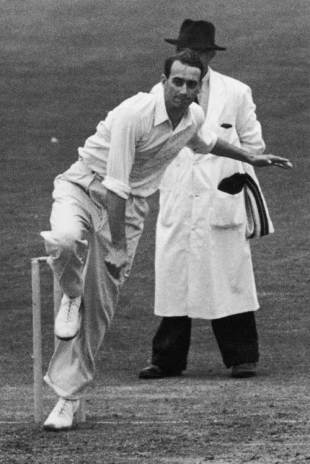That's the over
Six, eight, five, four - why has cricket not been able to make up its mind about how long a bowling unit should last?
06-Jun-2008
|
|

| |
Have overs always been six balls long?
No. Apart from the six-ball over, which has been the standard since 1979-80, an over has variously consisted of four, five, and eight balls at various points in time.
No. Apart from the six-ball over, which has been the standard since 1979-80, an over has variously consisted of four, five, and eight balls at various points in time.
When and where were the variants prevalent?
The first recorded over consisted of four balls, and overs were four-ball till 1889, when it changed to five balls per. In 1900 there was a move to six-ball overs.
The first recorded over consisted of four balls, and overs were four-ball till 1889, when it changed to five balls per. In 1900 there was a move to six-ball overs.
In the 1922-23 season, Australia chose to play eight-ball overs, and two seasons later New Zealand followed suit.
Has it been six-ball overs since 1900 everywhere except Australia and New Zealand?
No. In 1939, England started a two-year experiment in domestic cricket to trial the eight-ball over, but it lasted only a year, since war broke out in autumn. When cricket returned to England, they reverted to the six-ball rule. South Africa used eight-ball overs from 1938-39 to 1957-58, and Pakistan from 1974-75 to 1977-78. Even New Zealand went back to the six-ball over when cricket resumed after the war. In 1968-69 they changed again - to the eight-ball over again, before finally moving to the six-ball system with the rest of the world.
No. In 1939, England started a two-year experiment in domestic cricket to trial the eight-ball over, but it lasted only a year, since war broke out in autumn. When cricket returned to England, they reverted to the six-ball rule. South Africa used eight-ball overs from 1938-39 to 1957-58, and Pakistan from 1974-75 to 1977-78. Even New Zealand went back to the six-ball over when cricket resumed after the war. In 1968-69 they changed again - to the eight-ball over again, before finally moving to the six-ball system with the rest of the world.
Why all the chopping and changing?
There is no recorded reason for the moves from four balls to five and from five to six. But it is understood that the shortness of four- and five-ball overs - which meant too many over changes in the course of a day, and also did not afford bowlers too much leeway in terms of building up a rhythm and plotting a dismissal - contributed to their demise.
There is no recorded reason for the moves from four balls to five and from five to six. But it is understood that the shortness of four- and five-ball overs - which meant too many over changes in the course of a day, and also did not afford bowlers too much leeway in terms of building up a rhythm and plotting a dismissal - contributed to their demise.
The thinking in Australia behind extending the over to eight balls was to get more balls bowled in a day's play, as an eight-ball over meant fewer change-overs. But there were demerits too: bowlers tended to slow down for fear they would wear themselves out.
The ICC's rules for a long time provided for both kinds of over - six-ball and eight-ball - depending on the conditions of play in the host country.
Again there is no recorded official reason for the move to six balls after 1978-79, but it is widely believed that with the commercialisation of the sport and post the Kerry Packer revolution, there was no room for the eight-ball over, and the six-ball over was a happy balance.